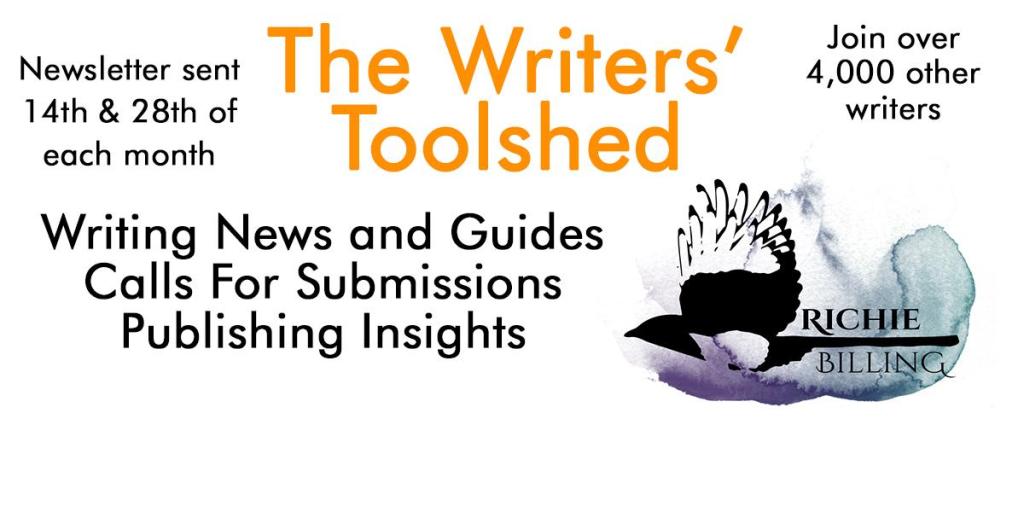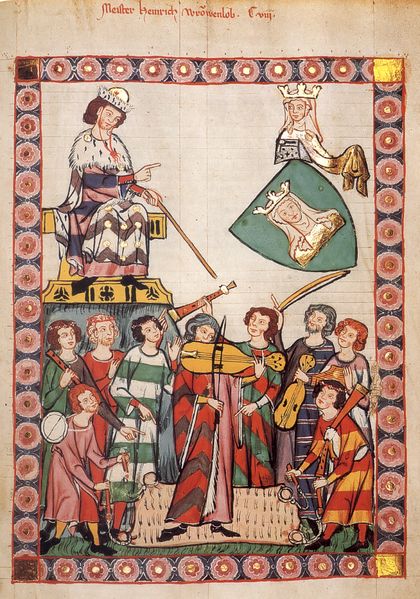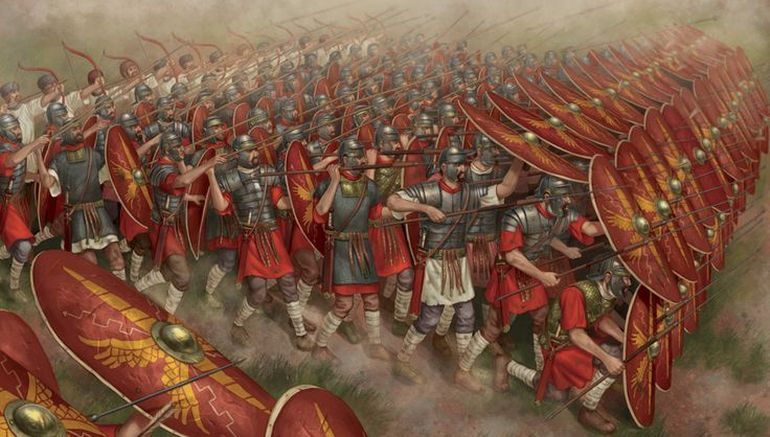In fantasy, the horse plays a vital role. They carry our heroes across continents and into battles. Some mounts are beautiful and fair, whereas others are rugged and hardy. But all the same, readers love them.
When it comes to creating fantasy horses, however, it’s important to get things right, or else endure the wrath of the equestrian gods.
So below, we’ll take a detailed look at the mechanics of horse riding. We’ll look at some famous fictional horses from the fantasy genre.
And we’ll take a look at the smaller details, like coming up with names.
Choose A Chapter
- Why Do Readers Love Fantasy Horses So Much?
- The Best Horses In The Fantasy Genre
- Horses In Mythology
- A List Of Horses In Fantasy
- A Gallery Of Fantasy Horses
- How Do I Create My Own Fantasy Horse? The Basics
- Advanced Tips For Creating Fantasy Horses
- How Do You Describe A Fantasy Horse?
- Fantasy Horse Name Generator
- More Fantasy Writing Guides
Why Do Readers Love Fantasy Horses So Much?
I don’t think anything fantasy-related has stirred me so much as the Ride of the Rohirrim. Faced with a gargantuan orc army, the fearless Riders of Rohan leapt into the fray to break the siege of Minas Tirith.
Seeing all those galloping feet hurtling over the rows of pikes and spears still brings a tear to my eye. Such is the power and influence of our noble fantasy horses.
“Arise, arise, Riders of Theoden! Fell deeds awake, fire and slaughter! Spears shall be shaken, shields shall be splintered. A sword day, a red day, ere the sun rises! Ride now, ride now! Ride for ruin and the world’s ending!”
King Theoden, The Return of the King
Horses play iconic roles in fantasy stories. They fearlessly carry our heroes into battle, face down dragons, Nazgul and all manner of fell beasts, and take our characters across countries and continents to save the world.
But there’s much more to a horse than them being just a means of transportation. Great care ought to be adopted
Below, we’ll look at types of horses (particularly from the Middle Ages), how to come up with horse names, ways of describing them, horses in mythology, fantasy horse art, and how this can all tie in with your worldbuilding process.
Examples Of Horses In The Fantasy Genre
I’m sure a dozen or more horses have sprung into your mind whilst reading this so far. Here are some of the most famous horses in fantasy.
Shadowfax – The Lord of the Rings
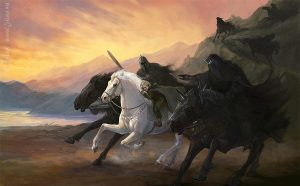
Perhaps the most famous of all fantasy horses, Shadowfax is the legendary Lord of Horses.
Not only is this creature beautiful and regarded as the fastest horse in all of Middle Earth, but he also has impeccable hearing. Either that or Gandalf has some insane whistling ability that Tolkien didn’t detail (unlike everything else, including Tom Bombadil and his gods-damned forest)
Bela – Wheel of Time
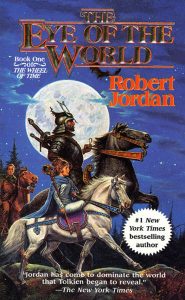
Fans of Robert Jordan’s The Wheel of Time series will no doubt be familiar with Rand’s heroic mount, Bela.
Once belonging to his adopted father, Bela carries Rand a serious distance on his adventure, as well as into battles.
Such is the influence of Bela that some fans have even hypothesised that she is, in fact, the Creator.
The Silver – Game of Thrones
As we’ll see below, horses play a big role in George RR Martin’s Game of Thrones world.
Perhaps the most significant of horses in the books (and series) is Daenerys Targaryen’s Silver, gifted to her by her husband Khal Drogo.
Unlike in other stories, Dany’s horse doesn’t have a name as such and is referred to as just ‘The Silver’.
Yfandes – Valdemar Saga

One of the most unique portrayals of fantasy horses is in Mercedes Lackey’s Valdemar saga.
Horses aren’t animals, but rather magical beings that resemble horses. They form bonds with their riders and communicate telepathically. Very cool.
Horses In Mythology

Mythology is rich with equestrian beasts. Perhaps the most famous of all mythological horses is Sleipnir, from Norse mythology. Sleipnir was the grey, eight-legged horse ridden by Odin.
It’s known as the greatest of all horses and upon its back, Odin rode to Hel, as we can see in this image over here.

Arguably one of the most famous mythological horses is the winged mount, Pegasus. Hailing from Greek mythology, it’s often depicted as white as the clouds it flies amongst and is the offspring of the god Poseidon.
Another popular horse from mythology is related to the Irish mythical Celtic Otherworld called Tír na nÓg. In the great tale of Oisín and Niamh, the pair ride upon a magical, beautiful white horse that can travel over water.
A List Of Horses In Fantasy
We’ve covered some of the best horses in fantasy above, but I wanted to share a more detailed list too. This way you can go off and do further research to keep the learning going!
- Rocinante, the steadfast companion from Don Quixote by Miguel de Cervantes
- Silver Blaze, the famous horse from The Adventure of Silver Blaze by Arthur Conan Doyle
- Fury, the spirited horse from a 1936 original story by Norman Krasna
- Black Beauty, the beloved horse from the classic novel by Anna Sewell
- Flicka, the unforgettable horse from My Friend Flicka by Mary O’Hara
- Bucephalus, Alexander the Great’s legendary horse from Katherine Roberts’ novel I Am the Great Horse
- Boxer, Mollie, and Clover, the hardworking horses from George Orwell’s Animal Farm
- Trotsky, Mrs. Piggle-Wiggle’s faithful horse from the books by Betty MacDonald
- Shadowfax, Gandalf the White’s noble steed from J.R.R. Tolkien’s The Lord of the Rings
- Pegasus, the magnificent flying horse from Greek mythology, featured in various stories including Rick Riordan’s Percy Jackson series
- Cinder, the magical horse from the fairy tale retelling in Marissa Meyer’s Lunar Chronicles
- Nana, the racehorse named for the eponymous heroine of Zola’s novel Nana
- Glue-Boy, Cuthbert Allgood’s steadfast horse from Stephen King’s Dark Tower series
- Kholstomer, the introspective horse from the story by Leo Tolstoy
- Sunstorm, from Ashleigh’s Hope by Joanna Campbell, a horse with a fiery spirit
- Snowfire, from Christopher Paolini’s Eragon, a horse as pure as freshly fallen snow
- Blaze, the energetic horse from a series of children’s books by Clarence William Anderson
- Marengo, Napoleon Bonaparte’s faithful companion in war
- Rival, the valiant stallion hero from Saddle a Thunderbolt by Jo Sykes
- Monarch, from Jodie’s Journey by Colin Thiele, a horse of regal bearing
- Trooper, the courageous horse from the TV series The Adventures of Rin Tin Tin
- Maximus, the horse who pursued Flynn Rider in Disney’s Tangled
- Joey, from the movie War Horse, symbolizing courage and resilience in the face of adversity
- Beauty, the gentle and dependable horse from Anna Sewell’s classic novel Black Beauty
- Binky, ridden by Death in Terry Pratchett’s Discworld novels, a horse with a dark sense of humor
- Firefoot, a horse ridden by Éomer in The Lord of the Rings, known for its speed and agility
- Captain Jinks’ horse, of the Horse Marines, a corn and beans-fed hero from the nursery rhyme
- Tornado, Zorro’s trusted black horse, swift as the wind
- Chiron, the wise and noble centaur from Greek mythology, known for his wisdom and mentorship
- Achilles, the loyal and swift horse of Captain Phoebus in Disney’s The Hunchback of Notre Dame
- Scipio, the daring horse from Rick Riordan’s Heroes of Olympus series
- Cigarette, from My Friend Flicka by Mary O’Hara, a horse with a mischievous streak
- Hidalgo, the courageous paint stallion from the movie of the same name
- Aldebaran, Antares, Rigel, and Altair, horses from Ben-Hur, known for their strength and speed
- Pilgrim, the troubled and injured horse from The Horse Whisperer book and movie
- Thunderhead, the son of Flicka, embodying the legacy of his famous mother
- Beau, the loyal horse from True Grit, standing by his rider through thick and thin
- Bess and Beauty, two workhorses from Farmer Boy by Laura Ingalls Wilder, known for their strength and endurance
- Felaróf, the legendary horse tamed by Eorl the Young, ancestor of the Mearas in The Lord of the Rings
- Azarax, from The Byerley Turk by Jeremy James, a horse with a mysterious past
- Hwin, the talking horse from The Horse and His Boy by C. S. Lewis, known for her intelligence and wit
- Morholt, King Mark’s formidable horse from the legend of Tristan and Iseult
- Oberon, the “ghost pony” from Lynn Hall’s The Mystery of Pony Hollow, a creature of mystery and legend
- Gulliver, the wise and noble horse from Horseplay by Lee Siegel, known for his storytelling prowess
- Roach, the horse ridden by Geralt of Rivia in The Witcher series by Andrzej Sapkowski
- Prince, Almanzo Wilder’s prized horse from Laura Ingalls Wilder’s Little House books, known for his beauty and strength
- Lady, Almanzo Wilder’s second horse, a gentle mare known for her grace and kindness
- Misty of Chincoteague, a real-life pony made famous by Marguerite Henry’s children’s book of the same name, known for her wild spirit and loyalty
- Black Gold, from Black Gold by Marguerite Henry, a legendary racehorse with a heart of gold
- Swift, the fleet-footed horse from Gulliver’s Travels by Jonathan Swift, known for his incredible speed
- Stardust, from Ashleigh’s Hope by Joanna Campbell, a horse whose presence brings hope and light
- Rih, Kara Ben Nemsi’s steadfast companion in Karl May’s tales of the Orient
- Wings, the sire of Stormy in Stormy, Misty’s Foal by Marguerite Henry, known for his strength and spirit
- Kadabra, the magical horse from Pokémon, known for his psychic abilities
- Banner, from My Friend Flicka by Mary O’Hara, a horse with a bold and adventurous spirit
- Bill the Pony, the reliable pack pony from The Lord of the Rings, known for his strength and loyalty
- Bayard, a magic bay horse from the legends derived from the medieval chansons de geste, known for his supernatural abilities
A Gallery Of Fantasy Horses
Below, you can find a collection of beautiful pictures and paintings of fantasy horses:






How Do I Create My Own Fantasy Horse? The Basics
Let’s take a look at the basics before diving into matters in more detail. Knowing these equine anatomy terms will make you look like a wizard when writing about a fantasy horse.

Key Facts About Horses
For some of us, interactions with horses are few and far between. We may occasionally drive by one in a field at 50mph, or see one grazing during a foray into the countryside.
We probably see horses more on TV than we do in reality. It, therefore, makes sense that we wouldn’t know too much about them, like how they behave and such.
Herein lies one of the biggest complaints from readers I’ve encountered: the lack of understanding.
To fill the void of this lack of experience, it’s important to learn. Assume you know nothing at all and start with the basics. After a few minutes of research you’ll learn:
- A female horse is called a mare
- A male is called a stallion
- A young female is called a filly
- A young male is known as a colt.
- The average horse can gallop around 27 miles per hour.
- They have 360-degree vision and bigger eyes than any other land-based mammal.
- The height of horses is, in some countries, measured in a unit called ‘hands’ (approx. 4 inches), something you may have encountered while reading fantasy.
So when it comes to creating a fantasy horse, you have the freedom to either stick with creatures as we know them, or depart from the norm and come up with your own spins. That’s the beauty of writing in the genre.
What Are The Different Types Of Horses?
Let’s bring George RR Martin into the equation here. He studies medieval life so has an understanding of the horses of those times. He uses this knowledge to tremendous effect in his stories. Here’s a bit of that knowledge for your benefit.
Horses had three main purposes in the Middle Ages—war, agriculture and transport—and they were bred with these purposes in mind.
Here are a few different breeds, some of which feature in A Song of Ice and Fire:
- Destrier – This was a horse renowned for its capabilities in war, though it was pretty uncommon due to their high cost— only knights and other aristocrats could afford them. Well-trained, strong, fast and agile, they were described as “tall and majestic and with great strength”. The average height of a destrier in the Middle Ages was 12 to 14 hands (48 to 56 inches).
- Palfrey – Equal to a destrier in price and popular with nobles and high ranking knights for riding, hunting and ceremonies. The smooth gait of palfreys made riding comfortable, so they were the preferred choice when travelling long distances.
- Courser/charger – Preferred for fierce, hectic battles. Fast and strong. Not as expensive as the destrier, though still valuable. The most common of all warhorses.
- Rounsey/rouncey – General purpose horses. The ‘ordinary’ one. Cheap and readily available. Ideal for both riding and war. Used by squires, men at arms, and poorer knights.
- Jennet – A horse smaller than a rounsey, known for its quiet nature. Used mostly for riding because of their smooth, ambling gait, though at times adopted as cavalry.
- Hobby – How could I leave out an Irish horse? My family would disown me. Hobbies were well-regarded for their swiftness, effective in skirmishes, though used infrequently in combat.
If ever you’re unsure of something or want to know more, why not try riding yourself? It’s the best lesson you can get. And it can be a great source of inspiration when it comes to writing about your own fantasy horses.
Feeling the chafe of the saddle and the strain on your muscles, whiffing the scent of the horse, and hearing the sounds as it trots along a muddy trail. I’m sure there’s a riding school not far away from you.
Or you could reach out to the writing community. There’s been many a time when fellow writers have offered their knowledge and experience on particular subjects to me, and you’ll be surprised how many people have experience of horse riding.
Advanced Tips For Creating Fantasy Horses
Now we know the basics of creating fantasy horses, let’s look at some more advanced tips.
Treat Your Fantasy Horses Like Characters
Your fantasy horse lives and breathes, just like your characters. It tires, grows hungry, thirsty, can get injured—limitations all living creatures possess. Disregarding these factors risks damaging the credibility of your tale.
Horses feature heavily in George RR Martin’s Tales of Dunk and Egg. The hedge knight Dunk has a close bond with his mounts. As a knight, he relies on them.
He makes sure his squire, Egg, feeds and waters them every day, and after a long ride, brushes and washes down. When one sadly dies, he buries it and later recalls memories of it.
As with any of your pets, horses require caring for, and a neglected horse is one that will suffer injuries, grow fatigued, and die.
There are other benefits to fleshing out your four-legged means of getting from A to B. A character-building a relationship with a horse, or any pet for that matter is a great source of empathy.
Characters considerate towards others tend to be likeable. Take Blondie from The Good, the Bad, and the Ugly. He’s a killer, but we’re drawn to him because, other than being cool as fuck and a mean shot, he respects and cares for his horse.
It’s a possible source of conflict too. If a horse your reader has grown attached to is at risk of harm, or heavens forbid is harmed (you cruel bastard), the reader feels it too. Just look at Black Beauty.
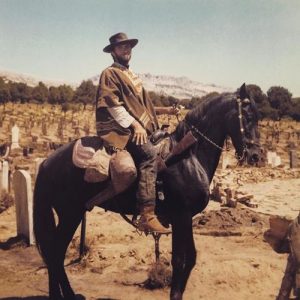
If You’re New To Horse Riding, You’re Going to Fall
Riding a horse is a skill that requires a lot of practice. A lot of practice.
Not only does the horse have to be well trained to handle a rider, but the rider must also understand how to ride the horse.
A character with no experience or knowledge of riding would be unable to jump on a horse and ride away to safety. Convenient yes, realistic no.
You don’t have to go through the ins and outs of learning how to ride a horse in your story. That’d be boring. Just acknowledge your character is training and improving.
A few things they would learn for instance:
- Lightly squeezing the horse’s sides with their legs to get it to walk.
- Squeezing again to set it into a trot.
- Or to make the horse stop, lean back and pull on the reins.
While falling off a horse can potentially lead to serious injury—another source of conflict—it also makes for great entertainment. Who doesn’t enjoy a bit of schadenfreude.
Each Horse Has Its Own Personality
All animals tend to have their own personality: belligerent, curious, nervous, friendly.
Featuring this in your stories not only gives it more life but also presents an opportunity for you to build connections between your characters and their steeds.
You may have a character who simply does not get along with their horse, which nips at him, rears up, kicks out, and runs off.
Or you may have a character like Aragorn who whispers sweet nothings in their ears and bends them to his will.
When it comes to fantasy horses, again you have the freedom to develop this as much as you want. Could you have more advanced mounts that can communicate in some form? Fantasy writing is all about freedom.
How Do You Describe A Fantasy Horse?
The world of horses is a detailed one, and taking advantage of those details will, as George RR Martin has proven, make your stories even more immersive.
The colours of horses are perhaps their most captivating aspect. Below, you’ll find a few different types of brown horse, but as any horse lover will know, these majestic animals can come in all manner of shades. A white horse is a common sight in fantasy, and a few times I’ve come across a blue horse. The beauty of the genre is that you could literally make them any colour you want.
Here are a few words to describe the colourations and breeds of horses:
Bay: a horse ranging in colour from light reddish-brown to dark brown with black points, these points being the mane, tail and lower legs.
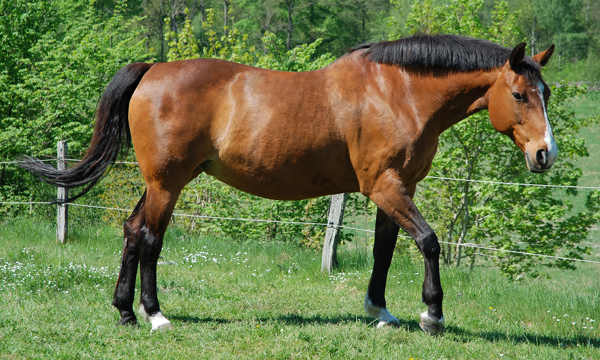
Chestnut: similar colour to the bay, though lacking any black points.

Buckskin: a lighter colour of the bay horse, though maintaining the black points.

Pinto: multi-coloured with patches of brown, white and/or black. The black and white variation is known as a piebald, a breed which features in A Song of Ice and Fire—Pod’s old piebald rounsey.
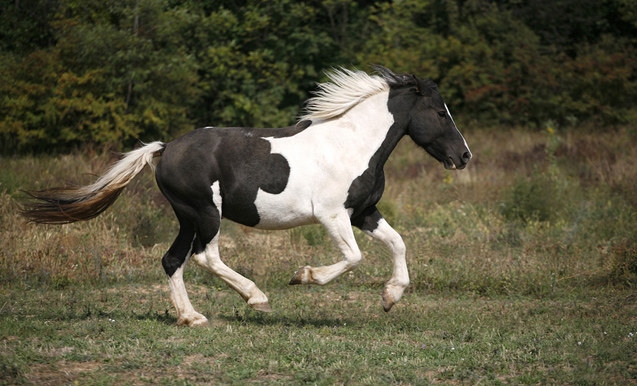
These are but a few; there are tons more for you to discover. And of course, when it comes to fantasy horses, you can run absolutely wild with the colours, manes, tails and any other feature.
Fantasy Horse Name Generator
Select Race
- angel
- cavePerson
- darkelf
- demon
- dragon
- drow
- dwarf
- elf
- fairy
- gnome
- goblin
- halfdemon
- halfling
- highelf
- highfairy
- human
- ogre
- orc
Coming up with names is always tricky, but what about fantasy horse names? Some writers may skip over this altogether. However, if you think of any pet you’ve had, how many of them haven’t had names? Horses are no different. It’s human nature to put names to things, animals included.
There are lots of different methods you can adopt to give you some horse name ideas. You could look at famous horses or famous fictional horses to help start you off.
If you’re going down the more entertaining route, you could look at racehorse names. Some are hilarious.
Films often feature horses too. Look at Black Beauty for instance. You could also look at the likes of Disney horses too—there are loads of them.
And if you still need a hand, check out my fantasy horse name generator. It creates free and unlimited names for all types of races and characters, such as orcs, elves, humans, demons and many more.
My guide on naming fantasy characters and places might come in handy here too.
More Fantasy Writing Guides
Thank you so much for reading this guide on fantasy horses. Below, I’ve included some other relevant guides you might find useful.
- A Guide to World Building
- How To Make Fantasy Armor
- Archery and Fantasy: A Guide
- A guide to creating a fantasy map
- 4 Easy Ways To Begin Writing A Novel
- What Is Foreshadowing In Writing?
Join An Online Writing Community
If you’d like more help and support with your writing or even just want to discuss a few ideas with like-minded folk, why not join my writing group? Just click the button below and you’ll gain access to an exclusive group where you can share your writing in confidence to get crucial feedback, discuss ideas and make friends!
If you need any more help with the process of creating a fantasy horse, please don’t hesitate to contact me.
- Mastering Dialogue: The Very Best Tips - January 12, 2024
- The Proven Method Of Writing Short Story Cover Letters - November 10, 2023
- Tips, Advice And Guidance On Writing Villains And Antagonists - November 7, 2023

